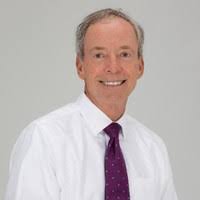Climate change is an issue I can understand and agree with and I sense that most people are concerned about it, but I’m worried we are not getting the message across properly.
Most of the media coverage is about protests in France or scary thoughts that we will be knee deep in water in our bedrooms. Worse are long scientific opinions about glaciers melting and permafrost thawing.

Most people are simply concerned and confused and don’t have a clue what to do other than maybe buying a Tesla. They can’t get their head around a problem this big and wonder how the United States cutting its carbon emissions is going to help when the Chinese are growing their energy consumption and burning zillions of tons of coal.
Daniel Stander, a senior leader at RMS, a global property insurance risk rating firm, put it in plain words. He said, “You live in the riskiest place in the world.”
He explained that risk is all about frequency and severity. In other words, more frequent events or more severe events make for a riskier environment, whether it is hurricanes or earthquakes or tornadoes.
We are concerned about hurricanes and the sea level rising, which can add to the severity of hurricane storm surge.
He further explained what I could really understand. Their firm sells their analysis of the risk rating of essentially every property in the U.S. to insurers, who use their analytics to underwrite and price our property insurance. Your home. My home. Every home and business is risk rated by RMS.
He said that unless we start to plan for sea-level rise and climate change, their forecasts will surely cause our property insurance costs to rise – substantially. He also said that our federal government’s appetite for underwriting our National Flood Insurance Program is decreasing and he expects flood insurance costs to go up dramatically.
What really concerned me was his opinion that mortgage lenders may decrease lending for 30-year mortgages if we do not get ahead of this.
Put those together and you have a recipe for declining real estate values, which could significantly damage our South Florida economy.
Ah, but there is opportunity in this potential calamity! He shared that we could actually mitigate these risks, not get dinged with higher insurance costs, and, actually, “Save the world”!
With the right plan to understand how they underwrite the risks we face, we can get ahead of the changes likely to come and build our infrastructure to provide for a safe, secure and dry future.
He’s right. We have the intelligence to figure this out. We have the universities to produce the engineers we will need. We are a wealthy region and residents and property owners will choose to invest wisely when they understand the challenges we face.
Then we can export our knowledge and skills and we can change the world because billions of people live in coastal regions and will want the solutions we figure out.
Everyone will understand the Economics of Resilience.
But what to do?
Governments — cities, counties and the state, now have Resilience Directors. Conferences and meetings are held frequently where we discuss the threats.
Do you know what is missing? A Plan. We need a detailed plan that will outline an effective attack on climate change and sea-level rise.
The governments need the business community and the business community needs the governments. We need to do this together.
My youngest grandchild, Christian, will soon be 2 years old. In 2100 he will be 83. We need to make sure that he and all kids have a beautiful beach and clean air and a great quality of life here in South Florida, like I have enjoyed.
Sure, it will be different than now, but maybe we can make it better – with the Plan we come up with now.
Keith Koenig is Chairman of the Broward Workshop and CEO of City Furniture.
“The Invading Sea” is part of the Florida Climate Reporting Network, a collaborative of news organizations across the state focusing on the threats posed by the warming climate.



